Reignin’ Cats and Dogs
Pampering to the Extreme
Pet-product industry insiders and experts have seen or heard about numerous items over the years that allow humans to pamper their pets. But some pet pampering seems a bit extreme.
"Probably the most outrageous thing I have seen was a diamond-studded dog collar for $250,000," says Jane Knittle, of A Pet's World. Bark Avenue Jewelers, in Pittsburgh, designed the collar for Pet Fashion Week in New York City in August 2006.
"A couple of vendors I have seen do genuine fur coats for dogs," says Sheila Spitza, of Wet Nose. "They dye them purple or pink. That draws the line for me. I don't go for real fur."
Bob Vetere, of the American Pet Products Manufacturers Association, says he once saw a $15,000 doghouse for inside the home. It came complete with three rooms and tiled floors. "I also heard about a doctor in Southern California who did liposuction on an obese dog," he says. "I think that was over the edge a little bit."
Dan Rappoport, of Pet Music, says he has seen bottled water, "like a Perrier for pets. And now I heard of a whole new movement: cremation jars for pets."
$38.5 Billion
Bob Vetere remembers growing up with Duke, his family dog. “[Duke] lived in a doghouse in the backyard. If he ever got into the house, it was by accident,” Vetere, president of the American Pet Products Manufacturers Association, says. These days, Vetere’s golden retriever, Dakota, gets the royal treatment. “My wife and I are devoted to the dog. There is probably not a squeaky toy thing that he doesn’t have. He goes out by appointment.”
As it turns out, Vetere fits the profile of an increasing number of pet owners in the United States: people who are spending big bucks on lots of “squeaky toy things” and other pet accessories.
Doing the numbers
In 2006, Americans spent more than $38.5 billion on their pets, according to the APPMA, a trade group based in Greenwich, CT. The association estimates that in 2007, $40.8 billion will be spent on pets in the United States. That number includes food and veterinary care.
Sundale Research, a market research company in Brentwood, NY, predicts that retail sales of pet toys will grow by an average of 6.2 percent per year from 2005 to 2010. In 2010, retail sales of pet toys should reach $3.49 billion, according to the company.
Pets are humans too?
Retailer Sheila Spitza has observed the trend in her stores. “Owners talk about their pets as if they were kids,” says Spitza, who with her husband, Joe, co-owns Wet Nose stores in Geneva and Oak Brook, IL. “Some couples do not have a family; they have a fur family instead.” Wet Nose specializes in natural items—such as food, treats and raw-food diets for dogs and cats. The stores also offer designer beds, toys and dishes.
There is a major trend in the pet industry toward “humanization,” where pets are thought of as part of the family, and treated like children. Catherine Frost, director of marketing and product development for Planet Dog, a pet product manufacturer in Portland, ME, says “the humanization of pets is here to stay. It’s not a passing trend. Eight out of 10 pet owners buy gifts for their pets during major holidays.”
The numbers bear out the trend. Statistics from Packaged Facts, the publishing division of MarketResearch.com, indicate that many people consider their pets to have human qualities, such as being sensitive, outgoing, inquisitive or stubborn. The September 2005 Packaged Facts report, called “Market Trends: Pet Grooming/Spa Products,” cites pet owner surveys done by the American Animal Hospital Association, a Lakewood, CO-based organization of more than 34,000 veterinary care providers. The association’s 2004 survey found that 94 percent of pet owners believed their pets had human personality traits.
Other pet theories
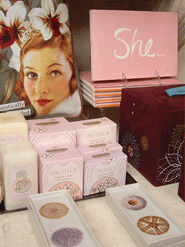 Pets being treated as family members might partly account for the increased sales volume of pet products, but it’s not the whole story, some experts say. Retailer Kathy Palmer of Fetch, a dog-and-cat supply store in Portland, ME, says some of the increase is due to the larger number of pet adoptions. According to the APPMA, in 1988, 56 percent of U.S. households owned a pet as compared to 63 percent in 2006. “After 9/11, maybe people wanted something to make them feel more at home, so they buy or adopt a pet,” says Palmer.
Pets being treated as family members might partly account for the increased sales volume of pet products, but it’s not the whole story, some experts say. Retailer Kathy Palmer of Fetch, a dog-and-cat supply store in Portland, ME, says some of the increase is due to the larger number of pet adoptions. According to the APPMA, in 1988, 56 percent of U.S. households owned a pet as compared to 63 percent in 2006. “After 9/11, maybe people wanted something to make them feel more at home, so they buy or adopt a pet,” says Palmer.
Some industry professionals say pampering a pet just helps make the pet owners feel better, or assuage guilt. “Although [a dog] would be satisfied with an old bone, you tend to reward pets on a human basis, because that makes you feel better,” Vetere says.
Dan Rappaport, president of Teaneck, NJ-based Pet Music, says: “When people are on vacation, they bring something back for their animal. It is a guilt purchase.” Pet Music produces a music series that is marketed as helping alleviate pets’ stress and separation anxiety. The original music on the CDs features wind instruments, string instruments and a piano. Recordings of nature sounds are mixed in.
Palmer, of Fetch, says that although the pets appreciate the pampering, the benefit is more for the humans. “It is natural to think that animals like being pampered,” Palmer says, “And sweaters and coats do keep the dogs warm and cozy, and they like that. But if something is fancy, versus functional, it is a people choice.”
Going upscale
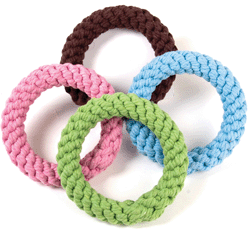 When it comes to accessories for pets, what are the people’s choices these days? Experts say it’s not just plain old catnip and chew toys that are selling. Toys and accessories for pets are going more upscale. Regula Wetli, one of the owners of Hamptons Hound—a pet product manufacturer in Bridgehampton, NY, that specializes in collars, leashes and carriers for dogs—has seen customers begin purchasing more elaborate items, such as designer food bowls or pet collars with rhinestones.
When it comes to accessories for pets, what are the people’s choices these days? Experts say it’s not just plain old catnip and chew toys that are selling. Toys and accessories for pets are going more upscale. Regula Wetli, one of the owners of Hamptons Hound—a pet product manufacturer in Bridgehampton, NY, that specializes in collars, leashes and carriers for dogs—has seen customers begin purchasing more elaborate items, such as designer food bowls or pet collars with rhinestones.
Vetere has an explanation: “You have [more] couples who have double incomes and no kids. And because they still want to work, they have timed feeding machines, or water-feeding machines, or auto-litter box cleanup, or they hire a pet sitter or hire a pet walker.”
All groomed and ready to go
 According to Packaged Facts’ September 2005 report “Market Trends: Pet Grooming/Spa Products,” grooming products are high on the pampering list. At Sexy Beast, a New York City company that makes beauty grooming products for dogs, a 1.7-ounce container of signature fragrance retails for $50. Furfection, a Mountain View, CA-based manufacturer of grooming products and other items for dogs and cats, offers Furfection Naturals: three shampoos and two conditioners. A 20-ounce bottle of Furfection’s Sensitive Skin Shampoo for dogs retails for $17.99. Furfection also makes shampoo for cats and puppies.
According to Packaged Facts’ September 2005 report “Market Trends: Pet Grooming/Spa Products,” grooming products are high on the pampering list. At Sexy Beast, a New York City company that makes beauty grooming products for dogs, a 1.7-ounce container of signature fragrance retails for $50. Furfection, a Mountain View, CA-based manufacturer of grooming products and other items for dogs and cats, offers Furfection Naturals: three shampoos and two conditioners. A 20-ounce bottle of Furfection’s Sensitive Skin Shampoo for dogs retails for $17.99. Furfection also makes shampoo for cats and puppies.
Once the dog is shampooed, it would be nice if he or she had someplace to go, like a wedding. Some people do include their dogs in their wedding ceremonies. When that’s the case, Hamptons Hound offers special dog collars. Wetli says the company’s bridal line offers more ‘blingy’ items. “We have collars with rhinestones draped on the side, which retail for about $60, to fully-beaded collars that run into hundreds of dollars,” she says. Hamptons Hound also sells even higher-end, custom-made collars embedded with Swarovski crystals.
It’s a dog’s world
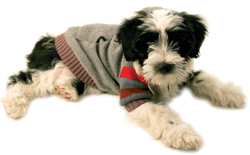 The APPMA puts the number of cats owned in the United States at about 90 million, compared to about 74 million dogs. Despite the larger number of cats, it is dog products that account for greater sales in the market.
The APPMA puts the number of cats owned in the United States at about 90 million, compared to about 74 million dogs. Despite the larger number of cats, it is dog products that account for greater sales in the market.
“Dogs are bigger, they consume more and they go through toys faster,” says Palmer, of Fetch. “You bring them out in public, so the leashes and collars are nicer. I sell cat items—like collars, leashes, food treats and toys—but dogs drive the market.”
Although Furfection carries toys and treats for cats, “about 90 percent of our sales are for dog items,” says company owner, Pamela Madden. Pet Music, for its part, is designed for dogs and cats.
The health beat
Also catering to dogs and cats, some companies offer natural products that are promoted as healthy for the animals. “Our core product is all-natural items for dogs and cats,” says Spitza, of Wet Nose. The store offers such items as Yeowww! catnip banana, a canvas toy shaped like the fruit that is filled with organic catnip, for $6.50. “We offer natural food and treats, and we specialize in raw-food diets,” she says.
In the wake of this year’s large-scale recalls of pet food, which followed thousands of pets reportedly getting sick from tainted food, some pet owners are seeking more natural alternatives. Palmer, of Fetch, has been offering natural food for animals for several years. “The reason for the store is that we wanted to supply natural foods to dogs and cats. We wanted to address the health problems in animals and address the quality of their diets,”she says.
Pet products for your store
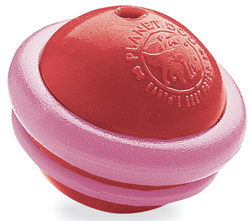 Alex Wax, warehouse manager for Harry Barker—a North Charleston, SC-based manufacturer of cat and dog products including bowls, treat canisters, beds and rope toys—says the company sells to a wide variety of gift shops—florists, garden shops and stationery shops—as well as pet stores. “In a dog-friendly town, people walk with their dogs a lot. They might be inspired to purchase for dogs and walk into your shop. There is no set time to shop for pets.”
Alex Wax, warehouse manager for Harry Barker—a North Charleston, SC-based manufacturer of cat and dog products including bowls, treat canisters, beds and rope toys—says the company sells to a wide variety of gift shops—florists, garden shops and stationery shops—as well as pet stores. “In a dog-friendly town, people walk with their dogs a lot. They might be inspired to purchase for dogs and walk into your shop. There is no set time to shop for pets.”
Vendors point out that pet products make great impulse purchases. Jane Knittle, president and owner of A Pet’s World—a designer, developer and manufacturer of pet products in Manchester Center, VT—says pet toys can be most lucrative in gift shops. “They are quick pick-up items,” she says.
Wetli, of Hamptons Hound, says that humor goes a long way toward attracting these impulse buys. The company’s T-shirts for dogs, with sayings like “Paw Me” and “Throw Me a Bone,” do very well in gift shops.
Sniffing out sales
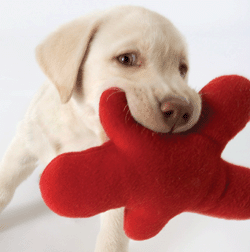 Howl-o-ween parties, pet psychics, pictures with Santa? Think these are farfetched ideas for your store? Think again! Palmer has hosted many pet events, including pictures with the Easter Bunny. “We have a treat bucket hanging by the door, and the treats are free,” she says.
Howl-o-ween parties, pet psychics, pictures with Santa? Think these are farfetched ideas for your store? Think again! Palmer has hosted many pet events, including pictures with the Easter Bunny. “We have a treat bucket hanging by the door, and the treats are free,” she says.
The people at Wet Nose also offer special events. “At Halloween, we send postcards to our clients and invite them to trick-or-treat in our store,” Spitza says. “Every dog with a costume that comes in gets a goodie bag of items. But our biggest event is our fall VIP event. We invite clients on our mailing list, and we have a pet psychic and food vendors, so the animals can have a taste test of different foods. That way you can see what dogs and cats like, and you are not spending money on something that they will not eat.”
Once a customer is in the store, pet product retailers and other industry experts stress, the displays must catch the eye. “We usually have a center table to highlight a season,” says Spitza. “One time we had some Planet Dog items, and we used their toys with some other, outdoor-related toys, and we had artificial grass, and we dressed up a dog mannequin in a football jersey. People are visually stimulated, so if you can visually stimulate someone, they are more inclined to purchase.”
Knittle, of A Pet’s World, suggests putting collars and leashes on a dowel, and toys in a basket. “And, especially if the shop is pet-friendly, set the basket off the floor a little bit [so the animals cannot reach them on their own],” she says.
A Packaged Facts report from February 2006, “Market Trends: Pet Products and Shoppers in Non-Traditional Retail Outlets,” states that “the more humanized the product is, the more sense it makes for it to be sold right alongside products for people.”
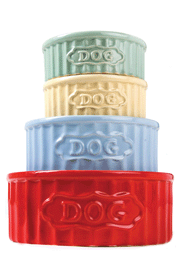 Vetere, of the American Pet Products Manufacturers Association, concurs. “The same people who make human purchases make pet purchases,” he says. “Two-thirds of the people who walk into a store will have a pet. If you stick pet items beside items for humans, you can’t go wrong.”
Vetere, of the American Pet Products Manufacturers Association, concurs. “The same people who make human purchases make pet purchases,” he says. “Two-thirds of the people who walk into a store will have a pet. If you stick pet items beside items for humans, you can’t go wrong.”
Hounding profits
Julie Amoroso, director of public relations for Sexy Beast, sees the trend toward increased spending on pets everywhere. “From pet-friendly hotels and airlines to designer clothes and grooming, America’s relationship with pets is evolving. More than ever, pets are becoming valued family members and friends, joining us in every facet of our lives: inside our home, around town, on vacation and even at work,” she says. Carol Boker, editor of Pet Product News International, a monthly magazine covering the pet industry, and Pet Style News, a quarterly covering pet boutiques, shares a similar sentiment. “Retired people; those people who have no kids or the kids are gone; singles—either ones not marrying for a while or not marrying at all—all have pets,” Boker says. “Animals are the next generation of children.”























